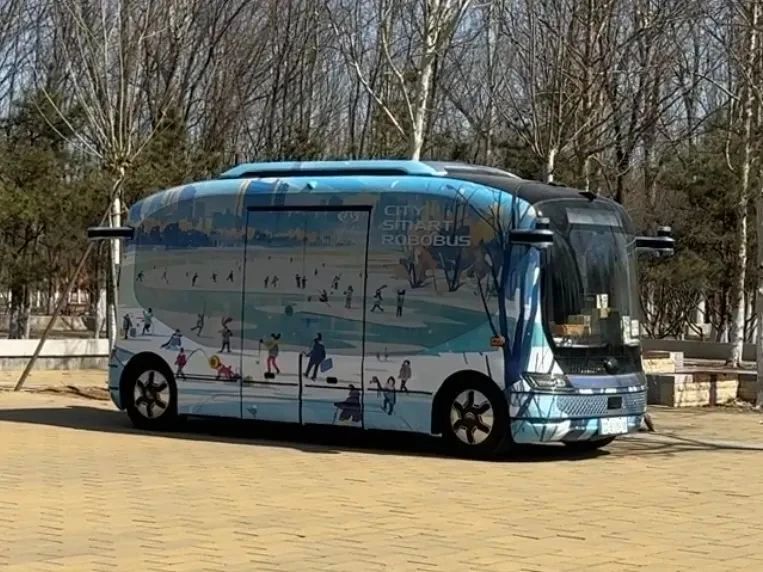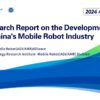In recent years, with policy support and technological iteration, low-speed autonomous vehicles have become more deeply integrated into various aspects of the social operation system. From logistics and distribution to urban services, from industrial parks to residential communities, the continuous expansion of application scenarios has not only brought a lot of convenience to people’s production and life, but also promoted continuous innovation of industry enterprises in products and in-depth exploration of application boundaries. In the fields of logistics and distribution and autonomous shuttles, many autonomous vehicle enterprises have adapted to different scenario requirements through the installation of functional modules and appearance modification. By installing specific equipment inside and outside the vehicle compartments, such as medical testing instruments, fire-fighting equipment, and detection sensors, the vehicles can be transformed for different purposes, such as from logistics and distribution to medical emergency, fire emergency response, and environmental monitoring. For example, recently, the Z5 autonomous vehicle under Jiushi Intelligence has been transformed into a smart road inspection vehicle. By being equipped with a road intelligent inspection system and a drone, it can transmit data to the road big data platform and use AI recognition algorithms to quickly analyze road surface diseases and evaluate road conditions. It is reported that this is also the first unmanned inspection project for smart roads that combines air and ground in China.

In addition to the road scenario, Shenzhen has recently achieved the implementation of autonomous delivery vehicles in the sanitation scenario, creating a benchmark case for the expansion and application of autonomous delivery vehicles in the sanitation field nationwide for the first time.
Moreover, modified versions of self-driving minibuses, such as “mobile KTVs” and “calorie department stores”, have recently appeared on the streets of Beijing, providing in-vehicle entertainment (such as singing) and unmanned commodity sales services. Combined with the display of cultural and creative products, they create an immersive cultural and tourism experience.

Many autonomous security inspection vehicles have also achieved the expansion of “psychological warfare” applications in the military field. For example, Beijing Suanfeng Zhengtu has developed psychological warfare autonomous vehicles and unmanned propaganda vehicles. Through means such as high-intensity directional noise, propaganda broadcasts, laser projection images, and videos, they exert a psychological impact on enemy personnel, thus weakening the combat effectiveness of the enemy invisibly.

Psychological Warfare Autonomous Vehicle of Suanfeng Zhengtu
At present, low-speed autonomous driving technology is being increasingly applied in fields such as cleaning and sanitation, logistics and distribution, ports, and mining areas. As enterprises continue to explore more niche scenarios, they are deeply solving industry pain points and empowering more industries.
For example, in the field of emergency rescue assistance, in the event of disasters or on complex road conditions, autonomous vehicles can transport rescue supplies, evacuate people, or serve as mobile command platforms. These vehicles come in various shapes and generally need to have all-terrain adaptability (such as climbing slopes and wading through water), and can navigate through damaged roads through remote control or autonomous navigation. Currently, some enterprises have developed autonomous vehicles equipped with life detectors for search and rescue missions in dangerous areas.
In addition, there is a smart special operation vehicle designed specifically for grassland fire fighting – the grassland unmanned fire truck, which integrates intelligent auxiliary remote control, fire recognition, and fully autonomous fire-fighting technology.

In the field of archaeological excavation, as early as 2021, the Norwegian Institute for Cultural Heritage Research (NIKU) and the technology company AutoAgri jointly launched a revolutionary autonomous ground-penetrating radar (GPR) for archaeological surveys. At archaeological excavation sites, autonomous vehicles can be used for the survey and information collection of cultural relics, reducing human interference and improving the efficiency and safety of archaeological work.

In the golf course scenario, which has become increasingly popular in the market in the past two years, there are also mini-autonomous golf bags that imitate the role of caddies, automatically following players and achieving intelligent positioning.

It can be seen that the core commonality of these scenarios lies in the deep integration of autonomous driving technology and industry demands. By solving core problems such as safety, efficiency, and experience, it promotes the evolution of autonomous driving from “replacing human labor” to “creating new value”. This evolutionary trend not only expands the application boundary of the technology but also marks the transformation of autonomous driving technology from a single tool attribute to an enabler of the industrial ecosystem.
Conclusion
Behind the innovative applications of low-speed autonomous vehicles and their penetration into more and more scenarios, there are ultimately the coordinated driving forces of multiple factors such as technology, policy, and market. The government attaches great importance to the development of autonomous driving technology and has introduced a series of policies to provide support in many aspects. Technologically, the progress of sensors, positioning and navigation, communication, and artificial intelligence technologies has enabled autonomous vehicles to have stronger environmental perception and intelligent decision-making capabilities, enabling them to adapt to complex scenario requirements.
More importantly, the emergence of diverse market demands means that different industries have different requirements for the functions and performance of autonomous vehicles, guiding enterprises to continuously innovate. At the same time, consumers’ acceptance of autonomous driving technology is also increasing, and the market demand is gradually expanding.





